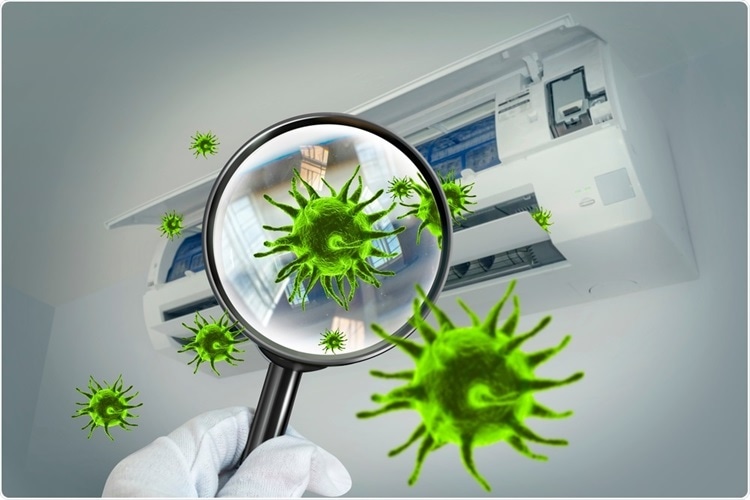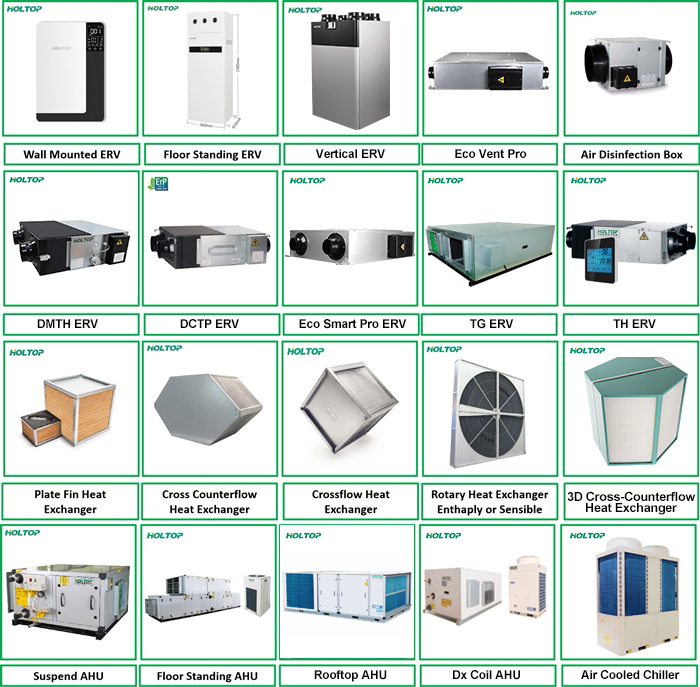The outbreak of the severe acute respiratory syndrome coronavirus 2 (SARS-CoV-2) was first detected in Wuhan, China, in 2019. SARS-CoV-2, which is the virus responsible for the coronavirus disease 2019 (COVID-19), was characterized as a pandemic by the World Health Organization (WHO) in March 2020. While an important mode of transmission of the virus is close contact, airborne transmission cannot be ruled out.
Background
Recent research has provided evidence of airborne transmission of viruses, which is particularly problematic in crowded indoor spaces. Scientists and policymakers, therefore, recommend maximum ventilation and have emphasized the importance of proper maintenance of heating, ventilation, and air conditioning (HVAC) systems.
Small droplets can stay aloft for longer durations, thereby facilitating viral transmission. These droplets could be generated by the coughing/sneezing of infected persons and be transported short- to long ranges through the HVAC systems. Airborne transport of bioaerosols to surfaces by physical contact is also not uncommon.
The characteristics of HVAC systems that may have an effect on transmission include ventilation, filtration rating, and age, to name a few. Developing a deeper understanding of this issue is essential for building scientists to develop effective engineering control strategies to protect occupant health and well-being.
Previous reviews have documented what is already known about HVAC systems and airborne transmission of infectious agents. A new study published on the preprint server medRxiv* provides an overview of reviews to identify previous systematic reviews on this crucial topic.
About the study
This comprehensive overview of reviews provides the existing evidence on the influence that HVAC systems have on airborne virus transmission. The first review published in 2007 found a clear association between ventilation and rates of viral transmission in buildings. To this end, the scientists observed that tuberculin conversion was significantly associated with ventilation rates of less than 2 air changes per hour (ACH) in general patient rooms and called for more research to quantify minimum ventilation standards in clinical and non-clinical settings.
A second survey was published in 2016 that obtained similar conclusions that there appears to be a relationship between ventilation features and airborne virus transmission. This study also highlighted the need for more well-designed multi-disciplinary epidemiological studies.
Very recently, in the context of the COVID-19 crisis, scientists have evaluated HVAC systems and their role in the transmission of coronaviruses. They found sufficient evidence in favor of an association between SARS-CoV-1 and the Middle East respiratory syndrome coronavirus (MERS-CoV). However, for SARS-CoV-2, the evidence was not conclusive.
The role of humidity in virus transmission has also been studied. The evidence gathered was specific to the influenza virus. It was observed that the survival of the virus was lowest between 40% and 80% relative humidity and it decreased with the time of exposure to humidity. Other studies have found that droplet transmission is decreased when the temperature and relative humidity in buildings are increased. In the context of public transportation, a recent review found that ventilation and filtration are effective in reducing virus transmission.
As discussed in previous studies, there is a lack of evidence to quantify minimum standards for HVAC design in the built environment. Methodologically rigorous and multi-disciplinary epidemiological studies within the fields of engineering, medicine, epidemiology, and public health are therefore required. Scientists have advocated standardizing experimental conditions, measurements, terminology, and simulating real-world conditions.
HVAC systems operate in a complex environment. Scientists have argued that the number and complexity of different confounding factors make it difficult to build a comprehensive evidence base. The flow of air in occupied spaces is such that particles are constantly mixing and moving in varied ways, thereby, making it challenging to make sound predictions.
Engineers have made some progress in modeling that allows for the isolation of confounding variables; however, they have made several assumptions that might be specific to a building design and may not be generalized. Results from epidemiological studies must also be considered alongside modeling studies.
Conclusion
The primary aim of this study was to understand current evidence about the effects of HVAC design features on virus transmission. The main strength of this study is its comprehensiveness, as it included references to seven previous reviews, including 47 different studies on the impact of HVAC design on virus transmission.
Another strong point of this study is the use of methods to avoid bias, of which included pre-specification of inclusion/exclusion criteria and the involvement of at least two reviewers at all stages. The study could not include many reviews, as they did not meet internationally recognized definitions and methodological expectations of systematic reviews.
There are several implications for public health measures, like proper ventilation, controlling temperature and humidity in indoor spaces, filtration, and regular maintenance of HVAC systems. Across all reviews, the general consensus was that there remains a need for more inter-disciplinary collaboration, with a specific focus on quantifying minimum specifications for HVAC systems.
Holtop has uploaded the video to introduce the effects of COVID-19 on the ERV market, which proved the importance of heat recovery ventilators on the ERV market.
Holtop as the leading brand in HVAC industry provides residential heat recovery ventilators and commercial heat recovery ventilators to meet the market requirement as well as some accessories, such as heat exchangers. For more product information, please send us an email to sales@holtop.com.
For more information, please visit: https://www.news-medical.net/news/20210928/The-role-of-heating-ventilation-and-air-conditioning-in-virus-transmission-including-SARS-CoV-2.aspx
Post time: Jun-07-2022










